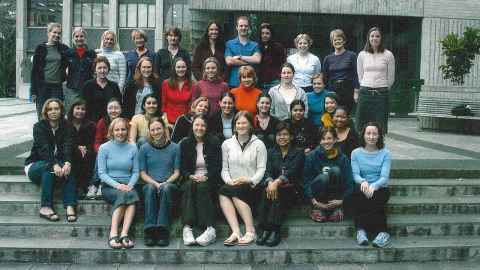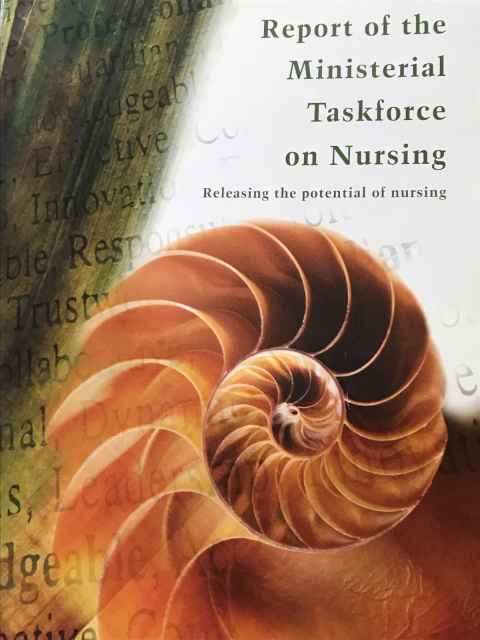Historical context
What was happening in the late 1990s when the School of Nursing was established?

When the School of Nursing opened at the University of Auckland in July 1999, it was greeted by enthusiasm in some quarters but a degree of controversy in others. In a first for New Zealand, the school was established alongside a medical school and aimed to provide a new depth of biomedical sciences and preparation for advanced clinical practice.
For some, the opening of yet another school of nursing – there were 17 already – seemed unnecessary and a retrograde step for a profession that had fought to establish itself as distinct from medicine. Despite the misgivings, it soon became apparent that this school would make a unique contribution to New Zealand nursing education and healthcare. Over the ensuing 20 years, there have been significant milestones and achievements.
The School of Nursing was established in a context of changes in basic nursing education, the effects of health reforms, concerns about unmet population health needs and demands for advanced nursing roles. The broader health context had shifted considerably during the 1980s and 1990s, making way for the possibility of using the New Zealand nursing workforce in a different way.
Pre-registration nursing education
Twenty-six years had passed since the beginning of the transfer of nursing education from hospital-based training to programmes located within tertiary education. This shift from a British to a North American model of nursing education had been prompted by the Carpenter Report of 1971. By the 1990s, the transfer was complete: all hospital-based schools had closed and comprehensive diploma-based nursing programmes leading to registration with the Nursing Council of New Zealand were now offered in polytechnics across New Zealand.
However by 1990, it became clear that basic New Zealand nursing qualifications were falling behind the degree preparation available elsewhere. As a response, New Zealand nursing schools gradually transitioned to degree programmes and in 1996, Nursing Council mandated a bachelor’s degree as the level of qualification for registration. Even so concerns remained about whether the programmes provided sufficient biomedical science content to prepare nurses for the current changes in healthcare and expanded roles in the future.
Health reforms
Health reforms of the 1980s and 1990s opened the possibility for new ways of delivering nursing services. During the 1980s, reforms focused on integrating planning and funding with an emphasis on public health and secondary care. Further reforms in 1993, aimed to increase efficiency by separating purchasing from the provision of healthcare a greater emphasis on more cost-effective services such as primary care. The reforms reflected a “New Right” managerialism and included the disestablishment substitution of hospital nurse executive roles with advisory roles. In 1997, a single funding body was formed, the National Health Funding Authority, with a focus on primary health, service integration and collaboration. At the time, the state of primary health care and the persistence of chronic disease was of concern. While nursing leadership had been dissipated in hospitals, the reforms had created opportunities for advanced nursing roles to better address health needs.
Calls for advanced nursing roles and prescribing rights

Recognition of the under-utilisation of nurses, especially in primary health care, and a concern over unmet health needs, fragmentation of health services and the burden of chronic diseases led to a reconsideration of the scope of practice of registered nurses. In other countries, nurses in advanced roles were managing independent services in which they could clinically assess patients, diagnose, make referrals and write prescriptions. The role of nurse practitioners, developed in North America in 1960s and the UK in 1980s, had been shown to improve health outcomes and access to healthcare. In the light of these developments, New Zealand began to seriously consider the introduction of advanced nursing roles.
The New Zealand government moved reasonably quickly to prepare for the introduction of nurse prescribing despite resistance from the medical profession, and concerns from some parts of the nursing profession. In 1994, a discussion document by Professor John Shaw provided the foundations for informed debate on this issue. This was followed by the establishment of a working group to investigate quality and safety issues needed for the introduction of nurse prescribing. Finally, on International Nurses Day, 12 May 1998, Bill English, the Minister of Health announced that the Medicines Act 1981 would be amended to allow for prescribing rights for nurses and other health professionals. That same year, English established the Ministerial Taskforce on Nursing, to identify barriers preventing nurses from reaching their full practice potential. A chief recommendation of the report, released in August 1988, was the development of advanced clinical nursing roles that would go beyond traditional and institutional boundaries. Such roles would include prescribing rights and associated professional responsibilities.
The School of Nursing was established at this turning point in nursing practice in New Zealand. Parliament passed the required amendments to the Medicines Act in 1999 just as the School was establishing its first postgraduate courses.
Demands for Enhanced Postgraduate Nursing Education
In 1998, the Ministerial Taskforce on Nursing had identified the need for well-resourced postgraduate programmes to support the development of advanced nursing practice roles. That same year, Nursing Council published a framework for post-registration nursing education. Its requirements for registration as nurse practitioner were a clinically-focused master’s degree including a pharmacology course for prescribing rights, and four to five years of experience in the area of practice.
Associate Professor Judy Kilpatrick, who was to become the first Head of School at the School of Nursing, had been a driving force behind the campaign to introduce legislative and policy changes that would support expanded roles for nurses. As Chairperson of Nursing Council from 1996, Kilpatrick guided the development of advanced nursing and the introduction of nurse practitioners and prescribing rights. She advocated for postgraduate education as part of the nursing career pathway, an argument she continued to promote as Head of the School from 1999.
Historical context - selected references
Beekman, E., & Patterson, L. (2003). Nurse prescribing in New Zealand: Professional gain or political loss? Nursing Praxis in New Zealand, 19(1), 15-22.
Department of Health (1971). An Improved System of Nursing Education for New Zealand, Wellington, Department of Health.
Jacobs, S,H. & Boddy, J, M. (2008). The genesis of advanced nursing practice in New Zealand: policy, politics and education. Nursing Praxis in New Zealand. 24(1).
Ministerial Taskforce on Nursing. (1998). Report of the Ministerial Taskforce on Nursing: Releasing the potential of nursing. Wellington: Ministry of Health.
Nicol, N. (1999). Whither nursing in the 21st century? Kai Tiaki: Nursing New Zealand. 5(2). 24-25
O'Connor, T. (2017). A nursing education era ends: Judy Kilpatrick's career has encompassed—and shaped—many changes in nursing education. Kai Tiaki: Nursing New Zealand. 23(3). 38-39.
Shaw J. (1994). Prescribing Rights in New Zealand. A Public Discussion Document, Dunedin, University of Otago.
Wilkinson, J. (2008). The Ministerial Taskforce on Nursing: A struggle for control, Nursing Praxis in New Zealand, 24 (3) 5-16.